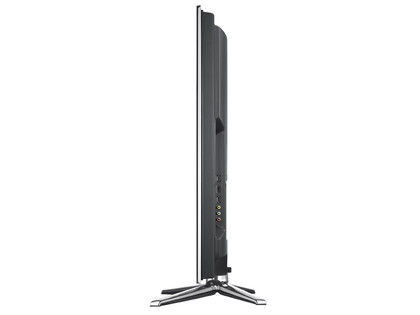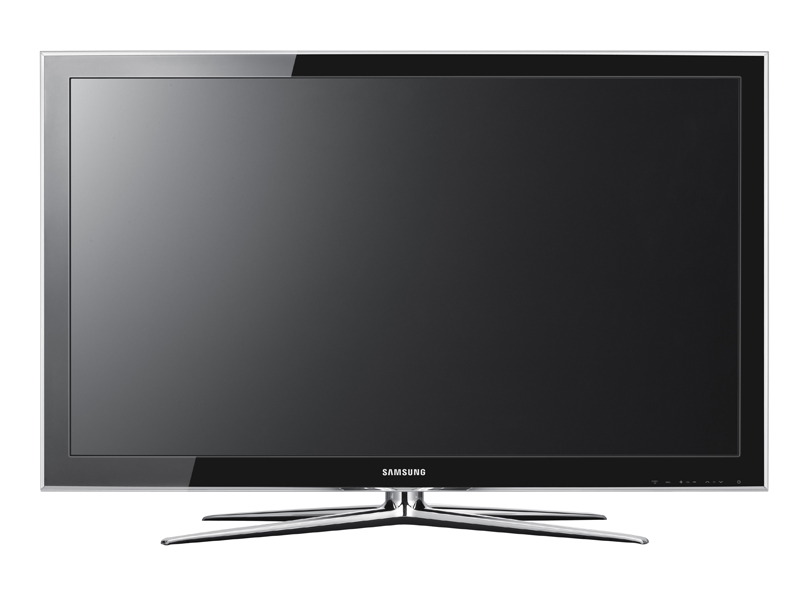Why you can trust TechRadar
Kicking off with Sky's 3D channel, the performance is strikingly bright and colourful.
Peak whites are slightly creamy and the image tone generally is more muted than with 2D, but the active shutter glasses don't wipe out nearly as much brightness as some rival 3D platforms.
Sky's 3D images look quite detailed and 'hi-def', too, considering their side-by-side 3D approach means they're not actually full HD in nature. Motion doesn't look quite as clean and sharp as with Samsung's edge-lit LED 3D sets, but it's still perfectly acceptable.
However, almost inevitably, there's pretty clear evidence of that arch nemesis of 3D LCD TVs, crosstalk noise. This means that you can regularly see echoes of objects – especially those in the mid to far distance – appearing to either side of 'real' objects. For instance, during long shots down a golf fairway, you can see two ghostly trees to either side of the actual ones.
This is an extreme case, but the crosstalk is more subtly visible almost all the time, causing the image to regularly look a little unfocused and shimmery.
Blu-ray playback
Turning to the frame-sequential, full HD 3D Blu-ray of Monsters Vs Aliens, the effect is pretty much identical to that seen with Sky. Images look more detailed and generally crisper, as you'd expect given that each of your eyes is being fed a full HD image.
But the generally impressive level of brightness and colour saturation remains, along with, alas, similar levels of crosstalk noise. As usual, a notorious scene for exposing this is the Golden Gate bridge sequence, as the struts and suspension lines of the bridge regularly highlight the phenomenon.
Crosstalk remains a real and tiring barrier to enjoying 3D, especially over extended viewing periods. Plus, of course, its effect runs counter to the clarity of the HD Blu-ray images that alternate frame 3D was designed to retain in the first place. Because of this, we still feel that when it comes to 3D Blu-ray, no LCD TV we've seen yet is as enjoyable to watch with 3D as Panasonic's VT20 plasma models.
Panasonic's plasmas don't do 2D to 3D conversion, though, so that warrants a little separate attention here. And actually, we really admire Samsung's efforts, as the system produces a genuine sense of 3D space and depth (more so than Sony's 2D-3D conversion) while making fewer depth 'mistakes' than we'd expected.
Crosstalk is sadly still there, pictures converted to 3D don't look quite as sharp as they did in their standard 2D form, and the accuracy of the conversion process decreases the lower the quality of source material you feed it. Also, we have out doubts about how many people will really want to use the system regularly. But then we guess it could keep your 3D needs satisfied while we wait for more true 3D sources to appear.
The 46C750's 2D performance is pretty good for a CCFL LCD TV. Colours are both well saturated and natural in tone, with solid if not exactly world-beating levels of subtlety when it comes to presenting colour blends.
Balancing act
Detail levels are reasonably, though not outstandingly, high with HD material, and the 400Hz processing does a good job of retaining clarity when objects get moving. This is particularly true if you use the 'Motion Plus' system's standard or Smooth settings, since they also remove almost all judder from the image.

However, they generate noticeable side effects, such as flickering and shimmering around the edges of moving objects. So we'd suggest you either stick with the 'Clear' mode, despite this not looking quite as liquid smooth, or else you tinker with the provided blur and judder sliding scale adjusters connected with the Motion Plus system until you get a balance that suits you between motion clarity and artefacts.
Finally in the plus column, black level response is mostly impressive, with good levels of backlight consistency during dark scenes, and reasonably well-contained greyness over parts of the picture that should look black.
The only significant problem we have with the 46C750's 2D pictures, in fact, concerns their viewing angle. Black levels reduce noticeably even if you sit at an angle of as little as 20° off-axis.
Current page: Samsung LE46C750: Picture
Prev Page Samsung LE46C750: Ease of use Next Page Samsung LE46C750: Sound and valueJohn has been writing about home entertainment technology for more than two decades - an especially impressive feat considering he still claims to only be 35 years old (yeah, right). In that time he’s reviewed hundreds if not thousands of TVs, projectors and speakers, and spent frankly far too long sitting by himself in a dark room.

